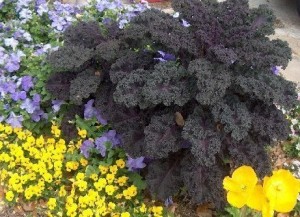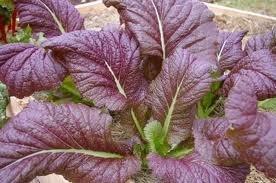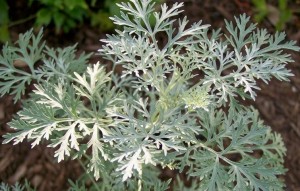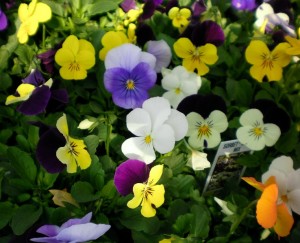Plant Flowers and Veggies for Winter Color
go.ncsu.edu/readext?182824
en Español / em Português
El inglés es el idioma de control de esta página. En la medida en que haya algún conflicto entre la traducción al inglés y la traducción, el inglés prevalece.
Al hacer clic en el enlace de traducción se activa un servicio de traducción gratuito para convertir la página al español. Al igual que con cualquier traducción por Internet, la conversión no es sensible al contexto y puede que no traduzca el texto en su significado original. NC State Extension no garantiza la exactitud del texto traducido. Por favor, tenga en cuenta que algunas aplicaciones y/o servicios pueden no funcionar como se espera cuando se traducen.
Português
Inglês é o idioma de controle desta página. Na medida que haja algum conflito entre o texto original em Inglês e a tradução, o Inglês prevalece.
Ao clicar no link de tradução, um serviço gratuito de tradução será ativado para converter a página para o Português. Como em qualquer tradução pela internet, a conversão não é sensivel ao contexto e pode não ocorrer a tradução para o significado orginal. O serviço de Extensão da Carolina do Norte (NC State Extension) não garante a exatidão do texto traduzido. Por favor, observe que algumas funções ou serviços podem não funcionar como esperado após a tradução.
English
English is the controlling language of this page. To the extent there is any conflict between the English text and the translation, English controls.
Clicking on the translation link activates a free translation service to convert the page to Spanish. As with any Internet translation, the conversion is not context-sensitive and may not translate the text to its original meaning. NC State Extension does not guarantee the accuracy of the translated text. Please note that some applications and/or services may not function as expected when translated.
Collapse ▲
The dark curly leaves of ‘Redbor’ kale contrast dramatically with the bright yellow flowers of violas.
You will find more than just pansies awaiting your landscape at garden centers this autumn! As the exciting trend of cool season gardening grows, more and more winter hardy annuals are making their way into local nurseries. Winter hardy annuals are plants like pansies that are planted in fall to grow during the cool part of the year, providing color through the winter and early spring. Many of these plants are both ornamental and edible and can be planted in landscapes as well as gardens.
Veggies Go Mainstream!
The biggest development in winter annuals over the last few years has been the use of vegetables as ornamental plants. Low growing ornamental cabbages and kales, with green leaves splashed in purple, rose or white, have been popular for several years. They are gorgeous in fall and early winter, but can start to look ragged by February. If you’re looking for something a little more durable and taller try ‘Red Russian’ or ‘Redbor’ kale.
These two varieties grow to three feet tall and two feet wide and are equally at home in the vegetable garden or flower border. ‘Red Russian’ is a delicious heirloom variety that sports feathery, jagged-edged blue green leaves and rosy-purple stems and midribs. For even more drama, seek out ‘Redbor’ with spectacular dark purple, frilly-edged leaves. Both of these varieties look good through April, at which time they produce spikes of yellow flowers that are great for attracting beneficial insects.
Charming Chard and Monster Mustard
Another vegetable that has crossed over the veggie garden fence is Swiss chard. This beet relative has large leaves with distinct, broad stalks that grow up to two feet tall. Traditionally the stalks on this plant are white, but the relatively new ‘Bright Lights’ variety sports stalks in showy colors like yellow, orange, pink, red and violet. They make quite a statement in the garden, mixed containers, or salad bowl!
A perfect companion for these colorful chards is the monster mustard known as ‘Red Giant’. This two-foot tall and wide burgundy leaved variety of mustard is commonly grown in Japan for use in stir-fries and salads. Its hot and spicy leaves certainly add punch, whether for the eyes or taste buds. The fiery flavor of ‘Red Giant’ also deters foliage feeders such as deer, rabbits and squirrels. Plants remain stunning all winter and are topped with spikes of small yellow flowers in spring.
Soothing Silver
If you seek to cool things down a bit, try the silvery leaves of dusty miller or ‘Powis Castle’ artemisia. Dusty miller generally grows to less than one foot tall and produces yellow, button like flowers in spring, while ‘Powis Castle’ Artemisia will form two to three foot tall and wide mounds. Both of these plants have finely cut, lacy leaves and are deer resistant, drought tolerant perennials that grow best in full sun. For more fabulous winter foliage, plant winter hardy herbs like curly leaf parsley and variegated or purple leaf sage.
Edible Flowers
Show off the fantastic foliage of these plants against the bright flowers of winter hardy annuals like English daisies, snapdragons, China pinks and pansies. Especially cute are the new mini-flowered viola type pansies whose blossoms more than make up for their small size by being produced in generous amounts. Look out for ‘Sorbet’ and ‘Penny’ strains, both available in shades and mixes of blue, purple, lavender, yellow, white, and orange.
In addition to adding color to the landscape, the flowers of pansies, violas, China pinks, English daisies, and snapdragons are edible, and can be added to salads or other dishes for a splash of color. Even if you don’t eat the blossoms, include these winter and spring bloomers in your yard to provide a source of early season nectar for pollinators.
Learn More
- ‘Redbor’ kale was selected as a “Super Plant” by LSU in 2011, find out why: http://www.lsuagcenter.com/en/our_offices/research_stations/Hammond/Features/super_plants/fall_2011/RedborKaleLouisianaSuperPlantFall2011.htm
Visit your local Cooperative Extension office to learn more about gardening and landscape care.
- If you live in Pender County, call 910-259-1235
- In New Hanover County, call 910-798-7660
- In Brunswick County, call 910-253-2610
- In Onslow County, call 910-455-5873
- In Duplin County, call 910-296-2143






